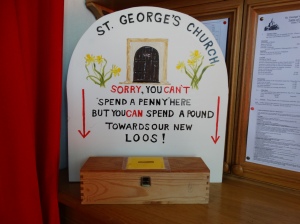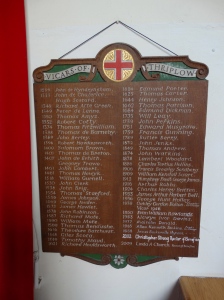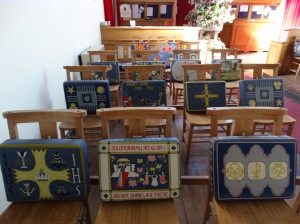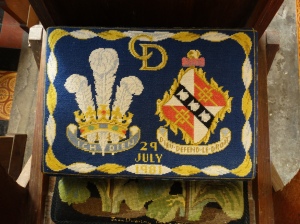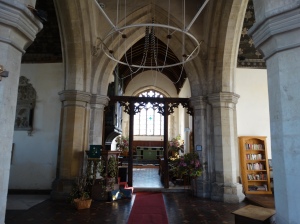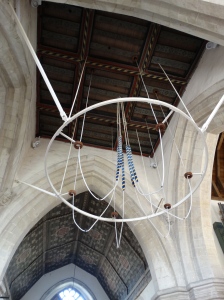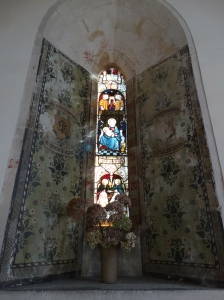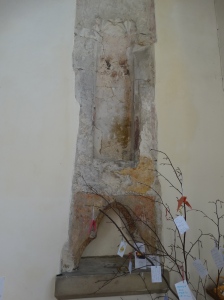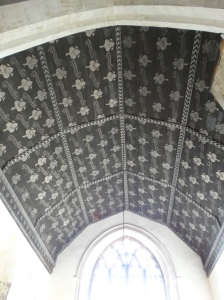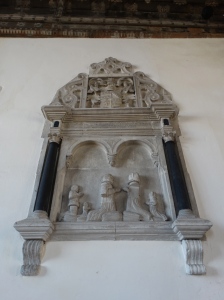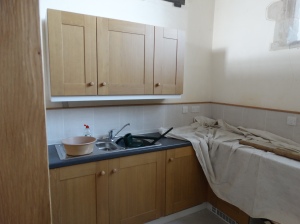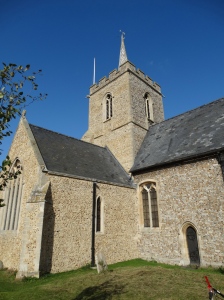 When we drove through the village of Thriplow yesterday I had not got the map open and had failed to find the church. My brother reminded me it is a church worth visiting (aren’t they all?), so today we came off the motorway and looked at the map! St George’s church is at TL442469, in the north of the village. We came here as kids for the Daffodil weekend – and looking at http://thriplowdaffodils.org.uk/ they started in 1969 (I was 7) and raised £206. Since then they have raised over £400,000; next year’s Festival is 21 and 22 March. It is amazing what one village can do.
When we drove through the village of Thriplow yesterday I had not got the map open and had failed to find the church. My brother reminded me it is a church worth visiting (aren’t they all?), so today we came off the motorway and looked at the map! St George’s church is at TL442469, in the north of the village. We came here as kids for the Daffodil weekend – and looking at http://thriplowdaffodils.org.uk/ they started in 1969 (I was 7) and raised £206. Since then they have raised over £400,000; next year’s Festival is 21 and 22 March. It is amazing what one village can do.
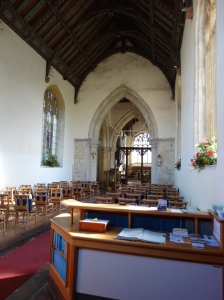
 Now the church is raising money for a loo. Nice counter as you walk in – neat and tidy church full of flowers from Harvest a few days ago.
Now the church is raising money for a loo. Nice counter as you walk in – neat and tidy church full of flowers from Harvest a few days ago.
The site of the church was used as a burial ground before 1200 BC (late Bronze Age) and evidence of eleven cremation burials were found in 1953/4. A chieftain’s (was he called Trippa?) burial – probably with a large mound of chalk over it, visible from the Icknield Way, a prehistoric trackway about a mile away. The church was started by the Normans in the 1100s and took 250 years to build. It is built of Barnack Stone, local clunch, and flint. The font is probably Norman, and is made of Purbeck marble – difficult to see under so much foliage. Nice Vicars’ list – I got chatting to a churchwarden, told her I was a Vicar near Newcastle, and she was soon finding out all about me and telling me what a wonderful benefice it was. After a few minutes I realised that they are looking for a new Vicar …
The kneelers caught my eye – a village project in the 1980s – especially the one for Charles and Diana …
The fact that the church is cruciform with bells in the middle looks a little odd, and probably looks odder when the ringers are standing in the middle of the church – but they can’t escape and avoid the service when they are in full public view. There were four bells in place during the reign of Edward VI (1547-553), now there are six, re-hung in 1995. The rood screen probably dates to 1350.
The church guidebook is a 1951 academic booklet, but it’s not a lot of use when you are trying to find out which tomb is which. Some old painting, and modern glass – I like St George and his dragon.
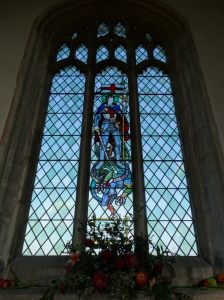
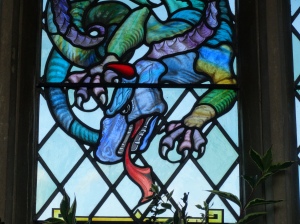 They have worked on the organ, and added a new Trumpet stop, have added a kitchen, and now want a loo.
They have worked on the organ, and added a new Trumpet stop, have added a kitchen, and now want a loo.
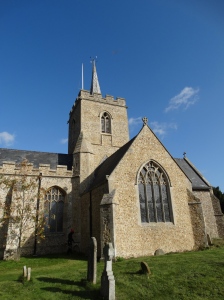 It is a lovely church – good to see their plans. Must come and see their daffs.
It is a lovely church – good to see their plans. Must come and see their daffs.

